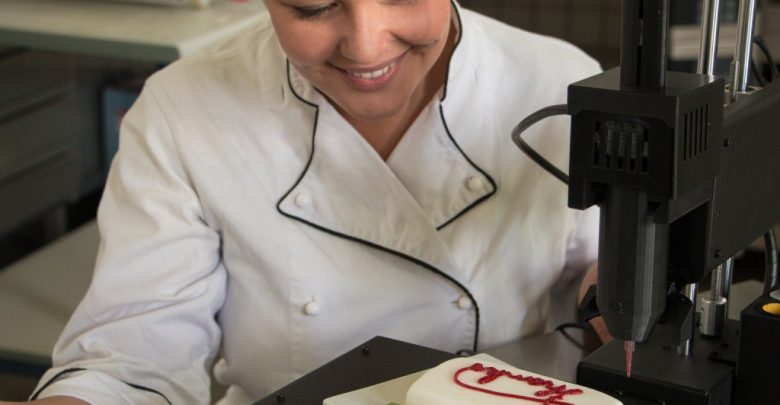Global 3D Food Printing Market Anticipated to Reach $525.6 Million by 2023

According to a new market intelligence report by BIS Research, titled ‘Global 3D Food Printing Market – Analysis and Forecast 2018-2023’, the global 3D food printing market is expected to reach $525.6 million by 2023, rising at a CAGR of 46.1% from 2018 to 2023. This growth is attributed to the rising awareness among the food innovators about the need to elevate food manufacturing systems.
The rising concerns regarding global food security and sustainability have facilitated massive investments by food-tech companies across the world. The global 3D food printing market is strongly motivated by the increasing demand for customized food products with nutrient content tailored for individual dietary needs. In the upcoming years, 3D food printing is projected to create a massive impact on the food economy by bridging the gap between small- and large-scale businesses.
With the application of 3D printing technology for food production, the management of food inventory is expected to become easier and inexpensive. Moreover, 3D food printing also offers significant market opportunities for fast-moving consumer goods (FMCG) food manufacturers to produce healthier food, as this technology can regulate the use of preservatives, additives, and other chemicals. Presently, 3D printing applications for food are primitive, with limited possibilities of structures and textures.
However, with further development of innovative technologies, the food fabrication process by 3D printing is expected to expand. According to Sonali Mazumdar, an analyst at BIS Research, in 2018, the fused deposition modeling technology is expected to hold more than 64% share of the total 3D printing market. Moreover, the commercial food vertical currently holds the largest market share of over 43% in the global 3D printing of food. The commercial segment includes bakeries and confectioneries, high-end restaurants, and retail stores.
This segment is the largest end-user of 3D food printing devices as this technology enables the user to bring artistic capabilities into cooking and expands customization features in the culinary industry. Moreover, 3D food printing technology has established itself to be an innovative solution for significant applications in the government vertical for the military and space research and in educational institutes. The 3D food printing technology has paved its way in the hospital food sector as well, owing to its nutrient customization and easy chewability features.
Currently, the market for 3D food printing in the residential vertical is at a nascent stage owing to the high cost of set-up and lack of expert personnel. Furthermore, the 3D food printing market by food types is currently dominated by confections such as candies, chocolates, cakes, and pastries. Chocolate, sugar, and marzipan are the most commonly used material for 3D printing, owing to their ability to be easily printed and extruded into different shapes.
Thus, the confections are the largest end-product for 3D food printing technology, and the segment creates significant opportunities in the 3D food printing market of personalized products. Apart from confection items, 3D food printing is rapidly being incorporated in the fabrication of other food articles such as dough-based items, such as pizza, pasta, cookies, and pancakes.
Moreover, the fabrication of 3D printed meat products is also expected to increase during the forecast period. Key players operating in this market have ramped up their product launch activities over the recent years to generate public awareness about their existing and new products and technologies, and compete with the competitors’ product portfolio. Partnerships and collaborations strategies have also been significantly employed for expansion in the 3D food printing market.
With the increasing growth in the global market, companies operating in this industry are compelled to come up with collaborative strategies with restaurants, retail stores, and other commercial food segments to sustain in the intensely competitive market. For instance, in April 2018, by Flow, a Netherlands-based 3D food printer developer, partnered with Jan Smink, a world-renowned chef, to open a new restaurant in the Netherlands, offering 3D printed foods.





